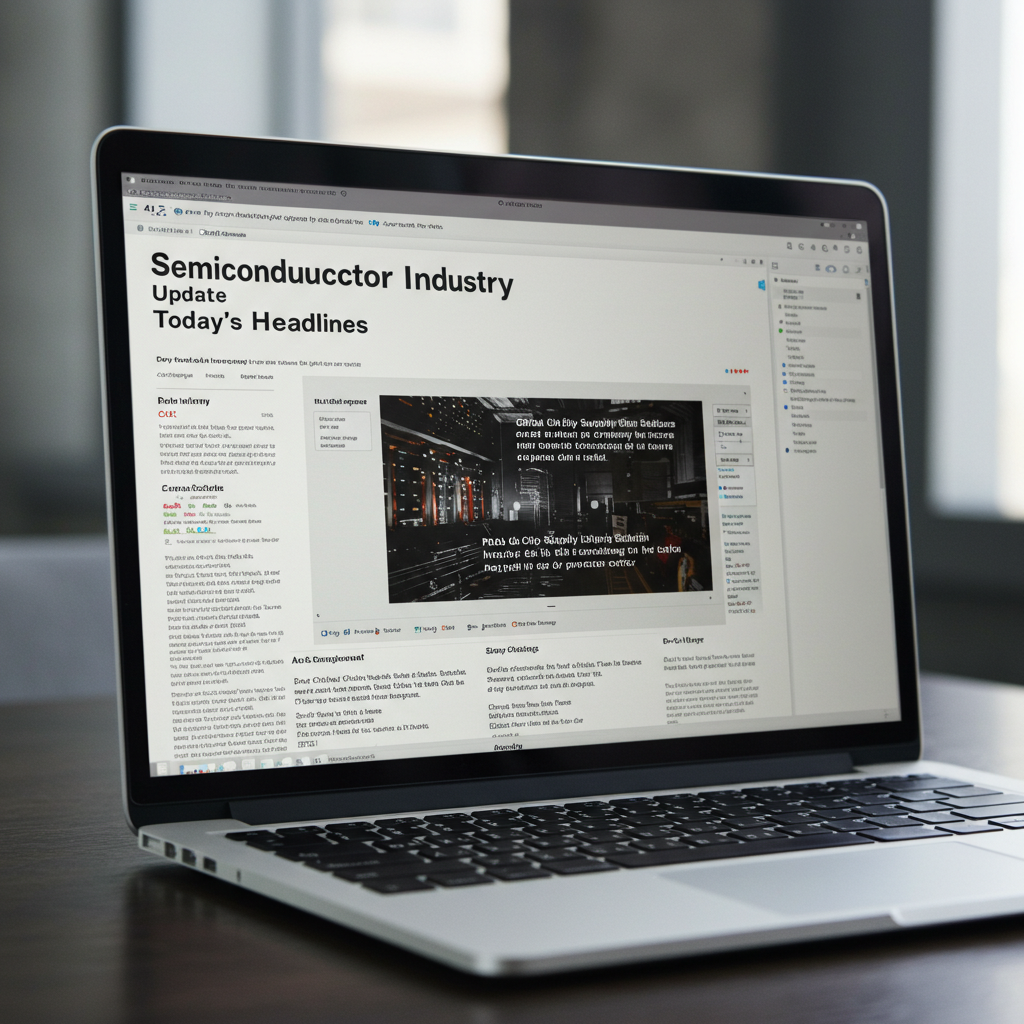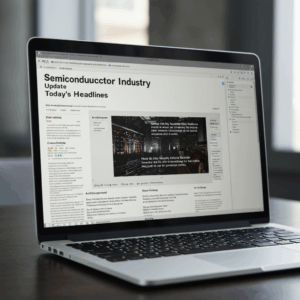The Top 10 most important news items extracted from June news sources are as follows
- U.S.-China Technology Hegemony Race and Intensifying Tariff Policies: The Trump administration’s revision of its semiconductor tariff strategy and China’s restrictions on rare earth exports continue to be discussed, with technology export deregulation also on the agenda in trade talks between the two countries. The U.S. is attempting to target China’s semiconductor ambitions from the design stage, and China is countering this by promoting the development of homegrown EDA tools and the AI chip design system Qimeng. Taiwan is also responding to tighter U.S. regulations by adding Huawei and SMIC to its export control list.
- Strong Semiconductor Market Growth and Accelerated Investment Due to AI Demand: The global semiconductor market is projected to grow 11.2% YoY to over $700 billion in 2025, with AI chip demand in particular driving foundry market revenue, which grew 12% YoY in the first quarter of 2025. GlobalFoundries has announced plans to invest $16 billion to strengthen semiconductor manufacturing in the U.S., and Micron is also investing an additional 43 trillion yen in advanced DRAM manufacturing and R&D in the U.S., for a total of $100 billion in mega-fab plans. On the other hand, Micron’s factory construction has been delayed due to permitting and opposition from local residents, and challenges have emerged.
- Fierce competition and technology trends in next-generation memory HBM: Competition for high bandwidth memory ( HBM), which is essential for high-performance AI chips, is intensifying, with SK hynix surpassing Samsung for the top spot in DRAM sales in the first quarter of 2025. sample shipments have begun and mass production is targeted for 2026, and SK hynix is leading the development of custom HBM4E in collaboration with NVIDIA and Microsoft, while Samsung has again failed NVIDIA certification for HBM3E and plans to retest in September. In addition, Micron has announced the end of DDR4 production as DDR4 memory prices soar and reach price parity with DDR5.
- New South Korean Government’s Focus on AI and Semiconductor Industry Development: South Korea’s newly elected President Lee Jae-myung has pledged to promote AI chips and invest in computing infrastructure and human resources with a policy of becoming one of the “three AI powerhouses” in the country. President Lee has proposed a 10% tax credit for domestic chip production and is also eyeing a 9 trillion won semiconductor aid package for Samsung and SK hynix. However, some challenges to realization have been pointed out, such as the construction project of the National AI Computing Center, which once again ended in unsuccessful bidding.
- TSMC‘s Leading-Edge Process and Factory Construction Trends: TSMC has reportedly maintained high utilization rates for its 3nm process and achieved yields of over 90% for its 2nm process. While the company plans to mass produce 1.4nm process in 2028 [Introductory summary from previous turn], it announced that the construction of its second Kumamoto plant will be delayed to mid-2025 due to traffic congestion issues. TSMC is accelerating the construction of a fab in the U.S., but the site of a potential packaging plant remains undecided. TSMC and the University of Tokyo have also established a joint lab for advanced semiconductor research and human resource development.
- Power Consumption of AI and Related Technology Development: The spread of AI has led to a sharp increase in power consumption, and it is estimated that ChatGPT consumes 10 times as much power as Google Search. To cope with this problem, technological development is underway to reduce power consumption, including air conditioning technology for data centers, semiconductor “exposure” technology using accelerators to reduce power consumption by 90%, and new devices that use optical signals to perform calculations. Whether hydrogen energy can be an energy solution for AI data centers is also being discussed.
- Intel’s Rumored Strategy Shift and Massive Restructuring: Intel is reportedly planning a massive 15-20% workforce reduction in July, primarily in factory positions, and is also closing its automotive division. The company has appointed new leadership from Cadence, Apple, and Google to compete with NVIDIA and aims to reacquire the data center market with next-generation Xeon CPUs in 2026. Intel’s 18A node was shown to have 25 %向上し、消費電力が40%performance reductions.
- Progress toward commercialization of quantum computing: IBM has announced plans to build an error-tolerant quantum supercomputer, Quantum Starling, by 2029; NVIDIA CEO Jensen Huang has also said that quantum computing “will be commercialized within a few years. Jensen Huang, CEO of NVIDIA, also stated that quantum computing “will be commercialized within a few years,” emphasizing that this technology has reached a tipping point. The University of Tokyo and RIKEN are also aiming to accelerate scientific computing by combining supercomputers and quantum technology.
- Nintendo Switch 2’s Strong Launch and NVIDIA SoC: The Nintendo Switch 2 sold more than 3.5 million units worldwide in its first four days on the market, breaking Nintendo’s console sales record, and NVIDIA CEO Jensen Huang said the Switch 2’s **Custom SoC is “completely different from anything NVIDIA has ever made before, “** suggesting that this new generation console could be a showcase for NVIDIA’s technological innovations.
- Increased importance of the semiconductor back-end (packaging) sector: The rise of chiplet technology has reaffirmed the importance of the semiconductor back-end, and the Japan OSAT Association is calling for collaboration, saying that “we cannot compete individually. Samsung is on track for mass production of panel level packages (PLPs), LG Innotek has started the world’s first mass production of “copier post” technology, and TSMC and ASE are strengthening their collaboration in PLPs, drawing attention to the 310x310mm format. Japanese companies are also actively investing in this field, with Yamaha Robotics targeting sales of 100 billion yen in the 2030s in its back-end manufacturing equipment business.



